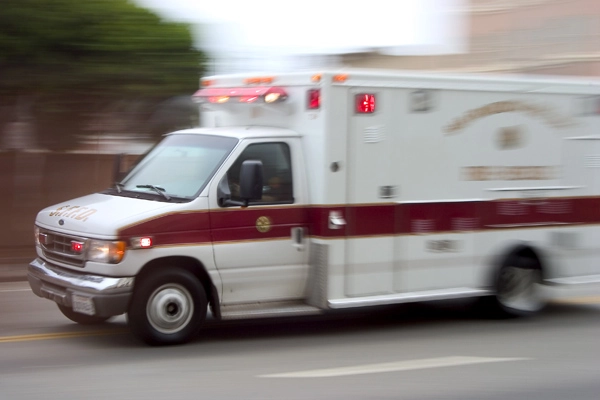Surviving a ruptured abdominal aortic aneurysm


Larry H.’s day started like any other. He went to his friend’s restaurant to visit over coffee, got into his truck to head to work and decided to make a quick stop at the post office.
In that short span of time, everything changed. Larry started to sweat, became dizzy, and by the time he reached the post office, he couldn’t see. “I was wringing wet,” he remembers. “I called my wife and asked to her to call 911. That is the last thing I remember until I woke up in the emergency room.”
According to Larry’s wife, Larry blacked out. When the emergency medical technicians arrived, they pulled him out of his truck and sped to Salem Health. They warned Larry’s wife that he was in critical condition and time was of the essence.
“I woke up for a moment in the emergency room, and the only face I could see was of one of the paramedics,” said Larry. “He was a young fellow, and I vividly remember how scared he looked.”
The paramedics were right — time was of the essence. Larry’s abdominal aorta had ruptured.
He underwent emergency surgery for a ruptured aortic aneurysm, which has a 90 percent mortality rate, and even a 50 percent mortality rate for people who make it to the operating room.
Larry’s aneurysm was especially complicated in that it extended up to the level of the arteries to the kidneys, which were plugged with chronic plaque. As a result, he was not a candidate for the modern minimally invasive techniques of aneurysm repair often practiced at Salem Health. An open surgical repair was performed in the operating room within minutes of his arrival.
“I was in extremely bad shape,” said Larry, “and very fortunate that Glen Roseborough, MD, and the Salem Health ER team were able to save my life. I lost five liters of blood. They also cleaned out chronic blockages in the arteries to my kidneys; otherwise I would have probably been on dialysis after the surgery. My kidney function is completely normal now.”
Larry spent ten days recovering in the hospital — eight of them in the intensive care unit. “The nursing staff was unbelievable,” said Larry. “It is the best staff. They deserve every award possible.”
After Larry was discharged from the hospital, he had appointments with both Stephen Chaffee, MD, and Chris Edwardson, MD, at his primary care physician’s office in Dallas, Oregon. “They both called me the Miracle Man, and then complimented Dr. Roseborough, a member of the Salem Health Heart & Vascular Institute, on what a wonderful job he did,” Larry recalls.
Larry’s recovery is progressing faster than normal. In fact, Larry’s occupational and physical therapist have told him that he will not require as much therapy as is typical with this type of surgery.
“I’ve had no complications,” said Larry. “It has been a great experience from top to bottom. They saved my life, and I am so grateful to the doctors and nurses at Salem Health.”